The U.S. presidential election story, by the charts
If a picture is worth a thousand words, herein lies a short novel on the state of the election race
ONE. MORE. WEEK.
“31% of voters believe the nation is headed in the right direction, while 64% think it’s on the wrong track.” — NBC
There’s a lot at stake in the upcoming U.S. presidential election. The American people are unhappy with the current state of affairs, and the country is divided on which path forward will ultimately make things better. This has led to a proliferation of so-called “single-issue voters.” It’s also led to a wide gap in voter preferences along gender lines.
Thankfully, Election Day is within spitting distance, and closing arguments are being made as millions have already voted. If you’re curious, as I am, about what’s actually going to determine the election’s outcome, this article is for you, as it summarizes the major themes of the election primarily through the use of charts, tables, and graphs.
Meaningful memes
Much has been said about the rising impact of the GenZ vote in 2024, and for good reason. Young adults tend to comprise a higher portion of overall swing voters—that is, voters who could go either way, and aren’t necessarily committed to one candidate or the other.
Per a Data for Progress research study, 43% of voters under the age of 45 are swing voters, versus only 33% of overall voters. So when you hear someone say that the young vote will decide the election, this is what they mean.
Social media is the dominant medium for cultural discourse, and political discourse is no exception. Nearly half of adults under 30 say social media is their main source of political and election news.
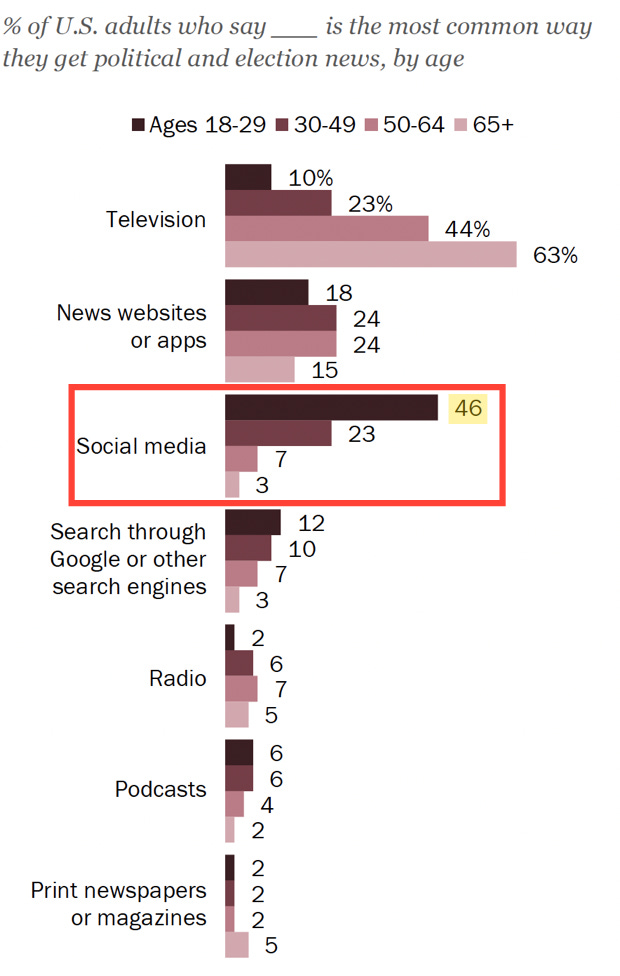
It’s no wonder why voters have turned to social media for news—trust in mass media has fallen dramatically among all age groups, particularly among the 18-29 and 30-49 age groups.
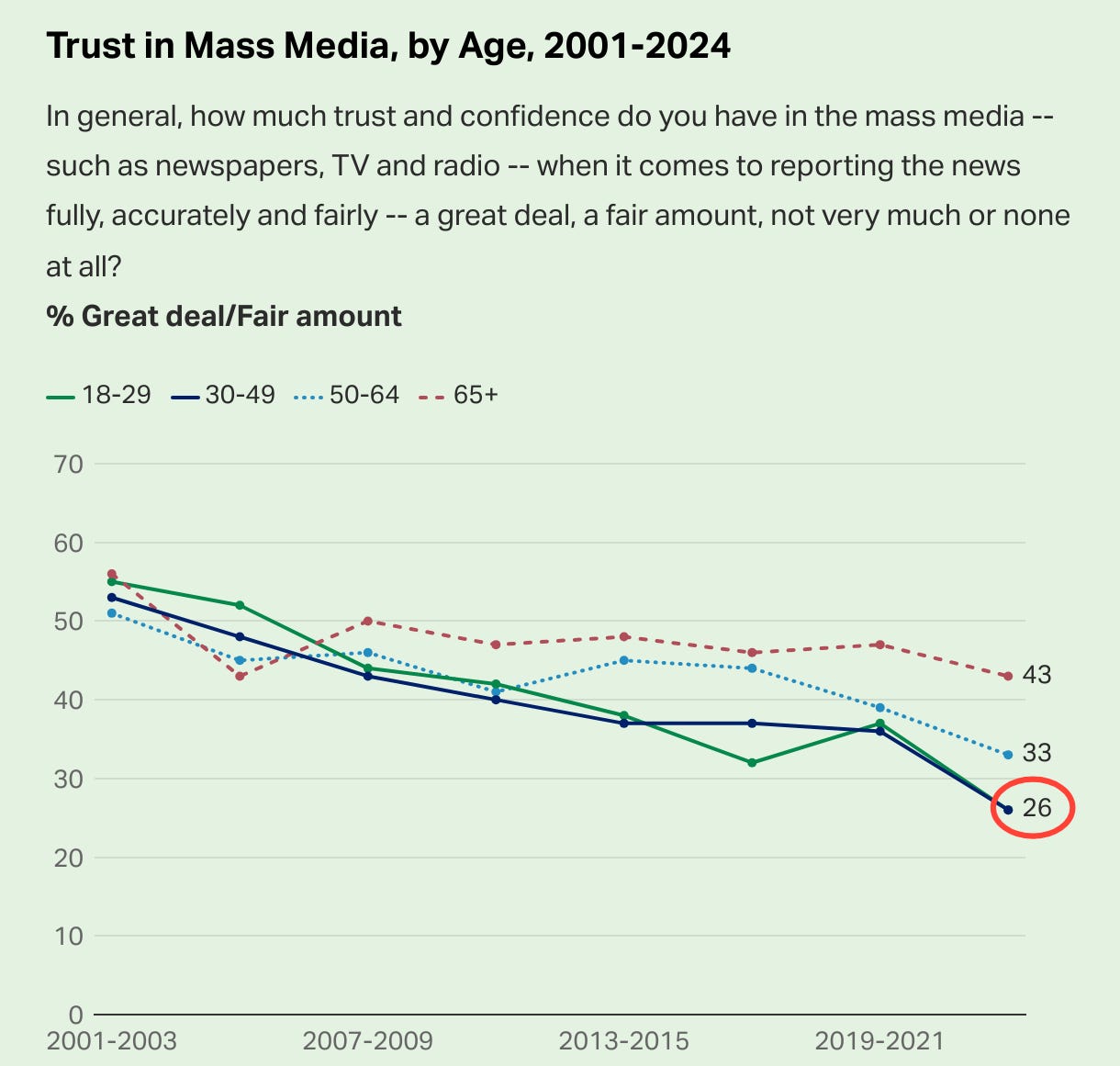
If you’re someone who consumes news through social media, you’ve surely seen the political memes. Over half of voters in the range of 18-29 years old have.

And for these voters who, again, are more inclined to be swing voters, memes are actually working to shift their perception of a candidate—a dynamic that’s been playing out in Kamala Harris’s favor.
Girl power: Abortion
Among all voters, the prospect of electing America’s first female president is seen as a meaningful milestone for the country—which is especially true for young female voters, 57% of whom say the election of the first female president would be “very important” historically.
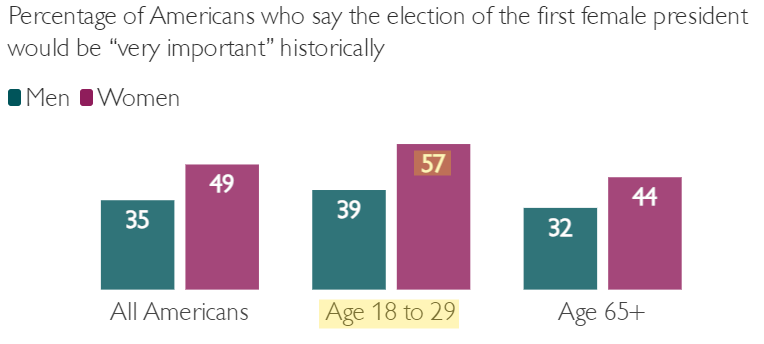
Potentially electing a female president comes at a time when many feel that women’s reproductive rights are on the ballot, so to speak. Since Roe v Wade was overturned, abortion has become one of the major deciding points for voters.

Unsurprisingly, Kamala’s policies are being viewed as better for women than the policies of Trump. Among Harris supporters, virtually none of them believe her policies would make things worse for women, whereas only 61% of Trump supporters say that his policies would make things better for women.
Given the topic of abortion being critically important to female voters, who tend to increasingly lean left, there’s a massive split in support of either candidate on that particular issue.

Indeed, among all registered voters polled, NBC found that women support Harris by a 14-point margin (55%-41%).
Boy power: Immigration
If you’ve been keeping up with the rhetoric surrounding the election, you’ve heard the issue of immigration frequently. Border encounters have been sustainably high throughout the Biden Harris administration.
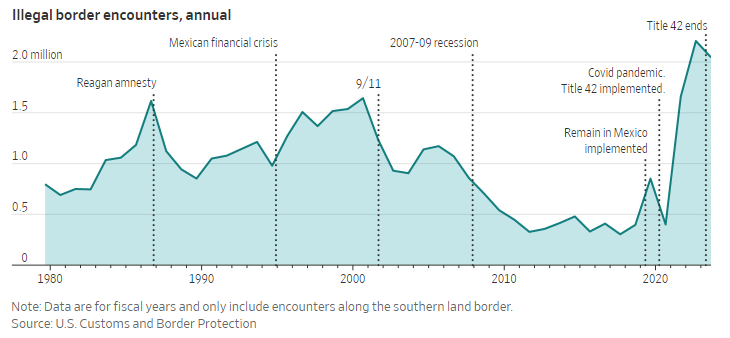
Same goes regarding a sustained surge in net illegal immigration to the U.S. over the past 3.5 years.
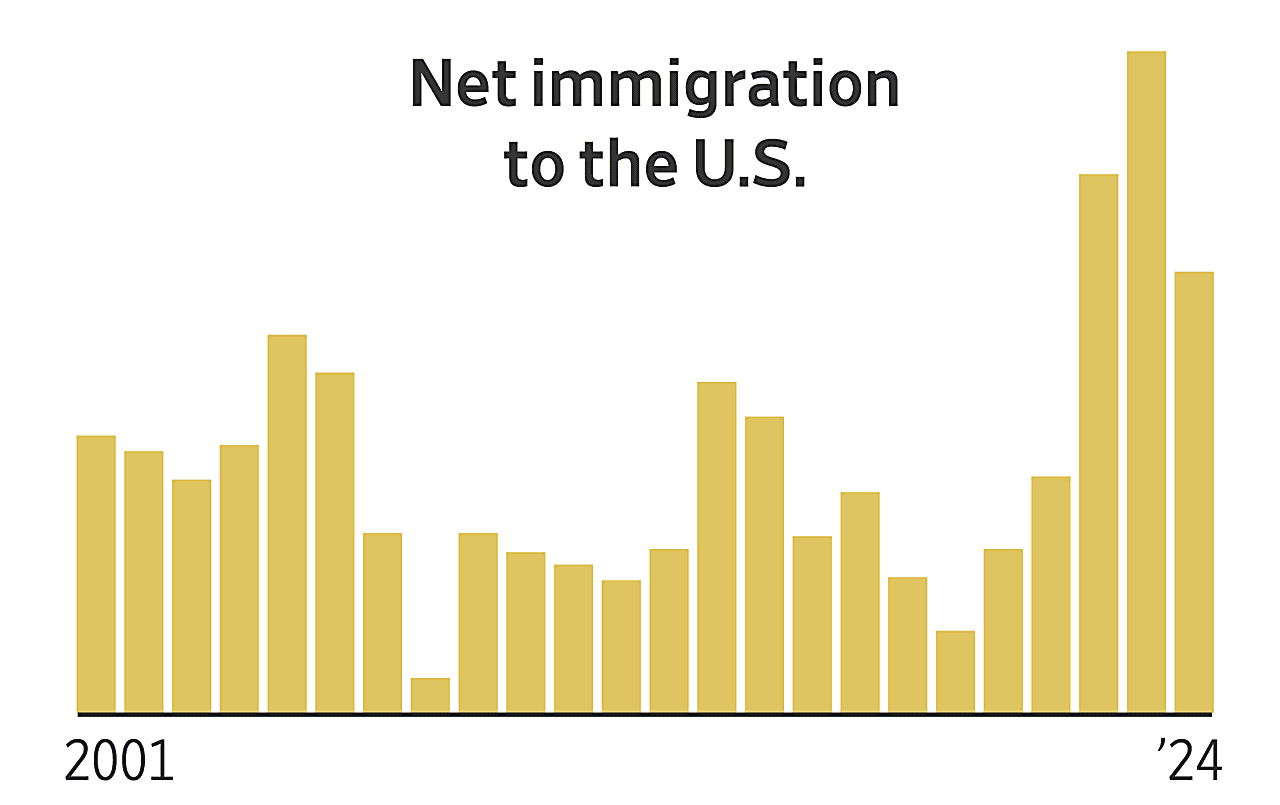
Given that the current administration put Kamala Harris in charge of the border early on, American voters see this as a dramatic policy failure which makes immigration a consequential issue in the election.
Unsurprisingly, asked whether immigration should be kept at its present level, increased, or decreased, over half the country (55%) believes immigration should be decreased.

Contrasting voters primarily concerned with the issue of abortion (young females), old male voters in the U.S. are most concerned with immigration-related issues—42% of males and 53% of 65-and-over poll respondents listed immigration as one of their top three most important issues.1

This group of voters (perhaps unsurprisingly) skews heavily on the Republican side. Indeed, YouGov’s poll revealed that 70% of Republican voters included immigration in their top three issues, while only 15% of Democrats did.

Even among all registered voters, poll respondents choosing immigration as the most important issue facing the U.S. has increased from 9.2% in 2020 to 14.6% in 2024.
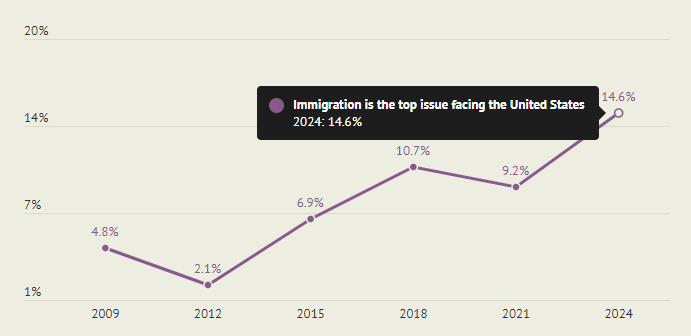
When it comes to the specifics of immigration policy, polled voters overwhelmingly trust Trump more than Harris on the issues of border wall construction, tackling drug smuggling, and overall border enforcement.

NBC’s recent polling revealed similar findings.

Akin to abortion policy being paramount to garnering the female vote in this election, immigration policy goes hand-in-hand with the male vote. And that vote is leaning heavily toward Trump—among all registered voters polled, NBC found that men back Trump by 16-points (56%-40%).
“It’s the economy, stupid”
These famous words epitomize the notion that, at least in American elections, people vote with their pocketbooks. That is to say, all other issues aside, economic prospects are the primary driver of which candidate the U.S. electorate supports. While we have seen a rise in single-issue voters, the high majority of voters remain focused on the economy.
Unlike the issues of immigration and abortion, the economy is considered a top issue by men and women alike.

And according to Pew Research Center’s September polling of registered voters, 81% of respondents said that the economy is “very important” to their vote.
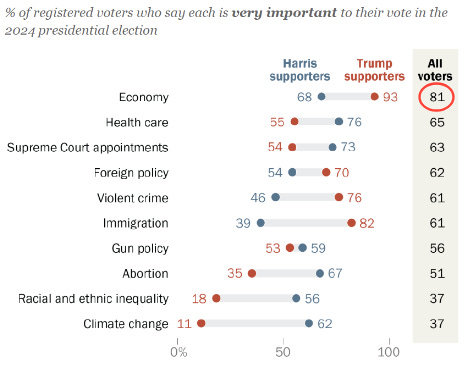
This is an issue that Trump has the advantage on, as top-of-mind for voters are the high rates of inflation that took place over the course of the Biden Harris administration.
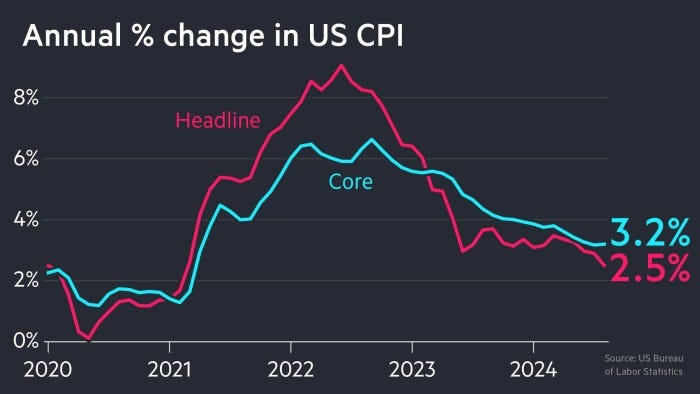
And while the rate of inflation has fallen significantly from its 2022 high-single-digit peak, the damage has been done and prices remain elevated—which is why a majority of voters in both parties remain very concerned vis a vis the economy.
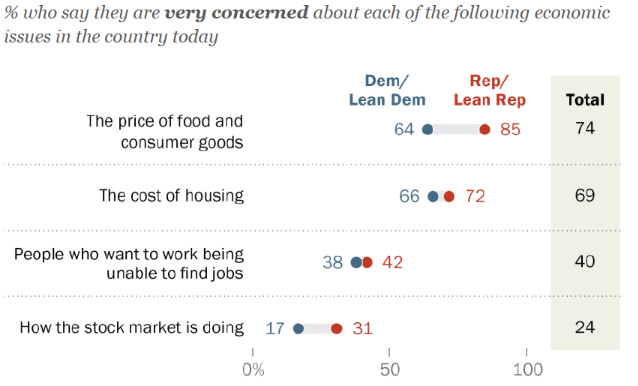
Indeed, despite the continued bull market in major U.S. stock indexes, only 25% of Americans currently rate economic conditions positively (less than half of Democrat voters).

So, which candidate does this give the advantage to? It depends on the specific economic issue. AP’s recent poll asking registered voters which candidate they trust more in handling specific issues revealed that Trump, for instance, has the advantage when it comes to voters’ perceptions of his policies on tariffs and the cost of goods, while Harris has the advantage on middle class taxes and the cost of housing.
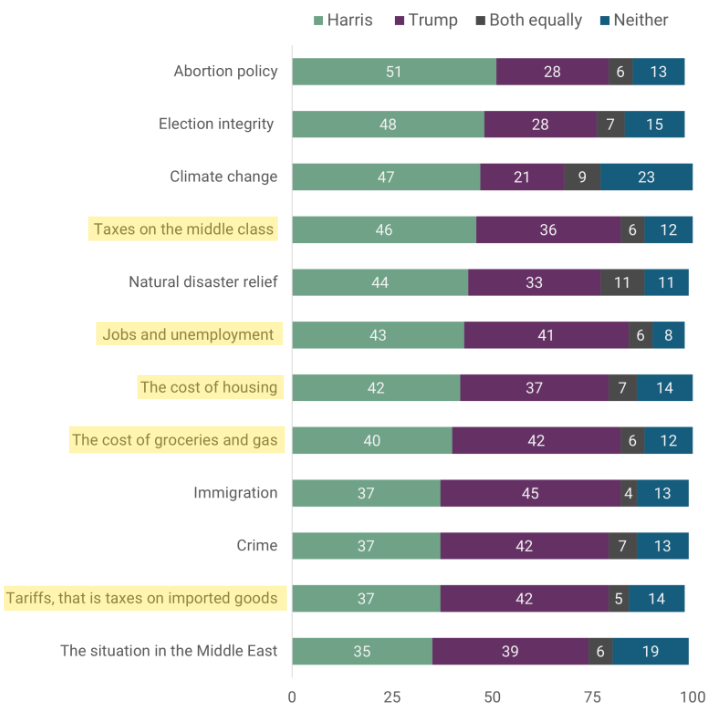
Despite attempts from the Harris campaign to dispel the notion that Trump—with his ongoing threats of tariffs—is good for the economy, the electorate remains more-or-less split on which candidate would be better for the economy.
Men lie, women lie; but does the money lie?
Given the split between voters’ perceptions of Trump versus Harris on the economy, and the advantages each candidate carries on other important issues (like abortion and immigration), the election polls are portraying a virtual toss-up—a tighter race at this point in the cycle than we’ve seen in many, many years.
There’s a lot of debate around whether the prediction markets (betting odds) provide a rational forecast. I’ve written about it twice (here and here), and while I believe that prediction markets aren’t entirely infallible, the odds overwhelmingly point toward a Trump victory (~63% in favor of Trump).

I prefer to use the Kalshi platform as a reference point, as its user base is comprised entirely of American bettors. Kalshi odds are currently at 64% in favor of a Trump victory.
And if you take the performance of the stock underlying Donald Trump’s media company DJT 0.00%↑ as any indication, it too is pointing toward a Trump victory, having more-than quadrupled in value over the past five weeks.
But what about the overall stock market? The old adage I’ve heard time and time again is: “As the stock market goes, so goes the election.”
And indeed, this is normally the case—the S&P 500 index has accurately predicted the election winner 83% of the time over the past century. Per Morgan Stanley research, “in the past 20 of 24 general election cycles dating back to 1928, when market performance was positive in the three months prior to Election Day the incumbent candidate won.”
So, what’s the S&P 500 indicating this time? It’s risen more than +53% since the Biden Harris administration took office, and nearly +7% over the past three months alone. This would point to a Harris (incumbent) victory, right?
“This time is different,” are some of the most famous last words in the investing world.
But is this time different? Some experts seem to think that, barring a market crash in the next few trading days, this election cycle will prove to be an exception to the old adage. And as you peer below the market’s surface, the market’s indications become more nuanced.
As legendary hedge fund manager Stanley Druckenmiller points out, there are market currents that point toward a Trump victory—such as the rallying of stocks within certain industries which stand to benefit from the presumed deregulation campaign that would come with a Trump administration.
As to the question of what’s noise versus what are real signals coming from the markets, well, the wizard himself, Steve Kornacki, said it best: “We will see.”
Specifically, and in order of importance according to YouGov poll, border enforcement (47%), drug smuggling (38%), pathways to citizenship (34%), immigrant-family separation (33%), and border wall construction (30%).




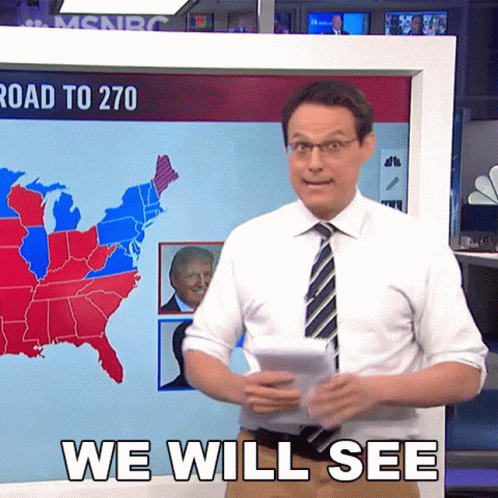
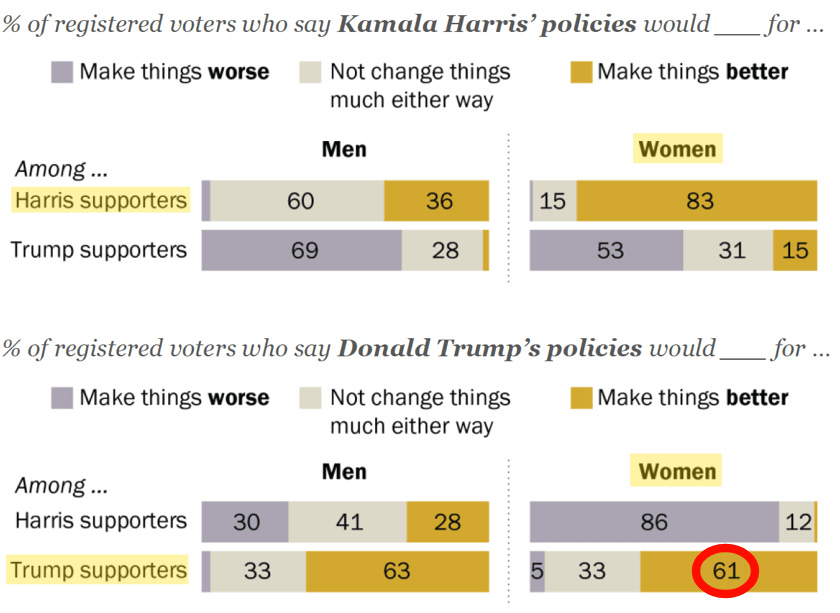


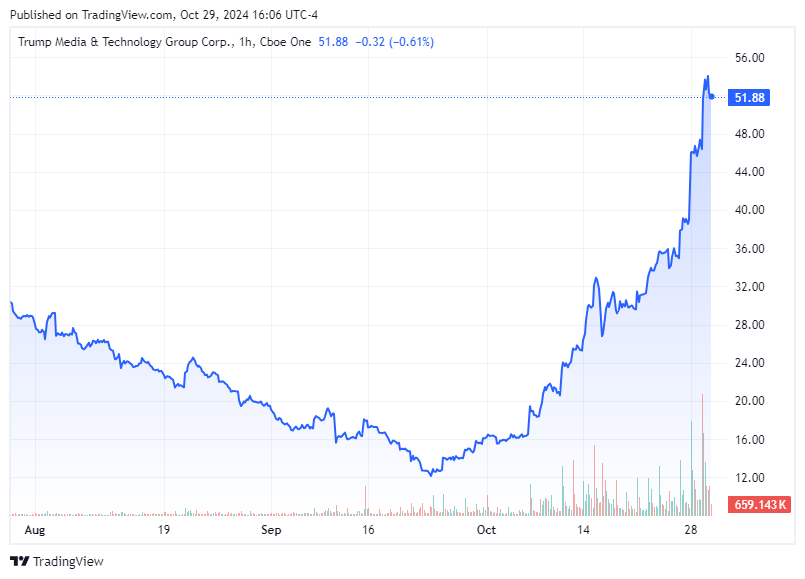
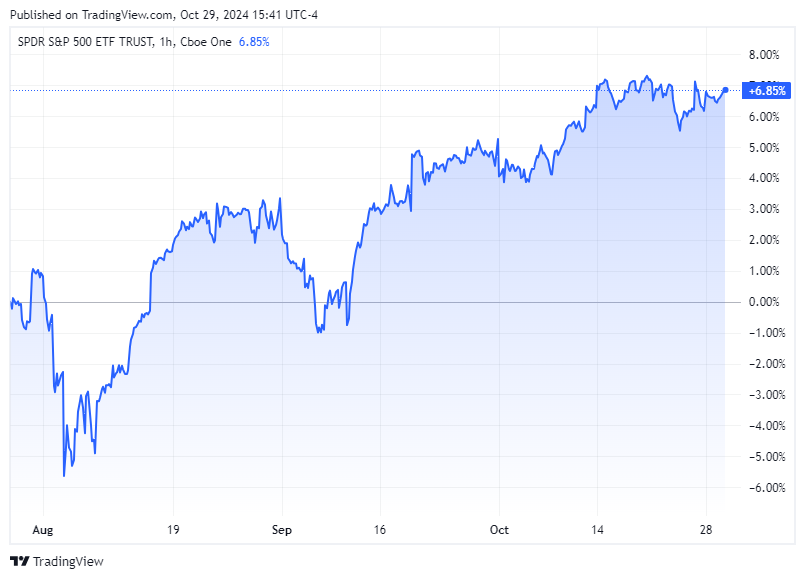
DJT stock just lost 30% with four days to go!